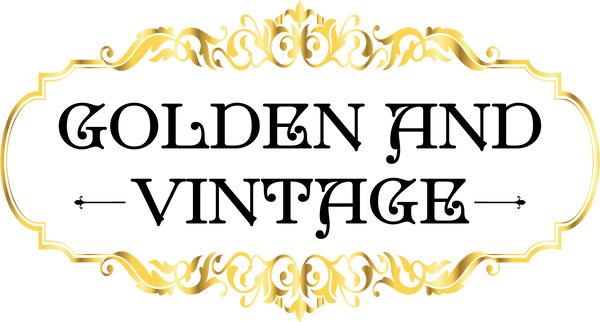
A Comprehensive Guide to Canada's Provinces and Territories
Share
Canada is the second-largest country in the world, stretching from the Pacific Ocean in the west to the Atlantic Ocean in the east and up to the Arctic in the north. This vast land is divided into 10 provinces and three territories, each with its distinct geography, economy, and cultural identity.
In this guide, we’ll explore Canada's provinces and territories in detail, highlighting their unique characteristics, industries, and attractions. Whether you're planning to visit, move, or just learn more about Canada, this article will give you a thorough understanding of its diverse regions.
Understanding Canada’s Political Divisions
Unlike countries with states, such as the United States, Canada is divided into provinces and territories.
- Provinces: These have more autonomy and constitutional powers, governing themselves under the Canadian federal system.
- Territories: Due to their lower population and vast, remote landscapes, these are directly governed by the federal government.
For easier navigation, we’ll group Canada’s provinces and territories into four major regions:
✔ Western Canada: British Columbia, Alberta, Saskatchewan, Manitoba
✔ Central Canada: Ontario, Quebec
✔ Atlantic Canada: Newfoundland & Labrador, Nova Scotia, New Brunswick, Prince Edward Island (PEI)
✔ Northern Canada: Yukon, Northwest Territories, Nunavut
Western Canada: Natural Beauty & Economic Powerhouses
The western provinces are known for their stunning landscapes, from towering mountains to vast prairies. They are also crucial to Canada’s economy due to their natural resources, agriculture, and tourism industries.
🇨🇦 British Columbia (BC)
🌎 Location: West coast, bordering the Pacific Ocean
🏙 Largest City: Vancouver
🌲 Known For: Coastal rainforests, mountains, and a thriving film industry
⚡ Main Industries: Technology, film production, tourism, and trade
BC is a global gateway, thanks to its ports and trade routes with Asia. Vancouver, often ranked as one of the most livable cities in the world, is a tech and cultural hub.
🇨🇦 Alberta
🌎 Location: Between British Columbia and Saskatchewan
🏙 Largest City: Calgary
🏞 Known For: Rocky Mountains, Banff & Jasper National Parks
⛽ Main Industries: Oil & gas, agriculture, tourism
Alberta is Canada’s energy capital, with massive oil reserves in the Athabasca Oil Sands. Calgary is famous for the Calgary Stampede, while Edmonton boasts the West Edmonton Mall, one of the largest shopping centers in North America.
🇨🇦 Saskatchewan
🌎 Location: Central prairies
🏙 Largest City: Saskatoon
🌾 Known For: Endless wheat fields, vast farmlands
⛏ Main Industries: Agriculture, mining (potash & uranium), energy
Saskatchewan is often called “Canada’s Breadbasket” due to its wheat production. It also has some of the world’s richest potash reserves, a key ingredient in fertilizer.
🇨🇦 Manitoba
🌎 Location: Easternmost prairie province
🏙 Largest City: Winnipeg
🌊 Known For: Thousands of lakes, Indigenous culture
🎭 Main Industries: Agriculture, mining, manufacturing
Manitoba is home to Lake Winnipeg, one of the largest freshwater lakes in the world. Winnipeg, the capital, has a rich indigenous heritage and a vibrant arts scene.
Central Canada: The Heart of the Nation
🇨🇦 Ontario
🌎 Location: Central Canada
🏙 Largest City: Toronto
🏛 Capital: Ottawa (Canada’s capital city)
💰 Known For: Financial hub, Niagara Falls, multicultural cities
📈 Main Industries: Finance, technology, automotive manufacturing
Ontario is Canada’s most populous province and home to Toronto, the country’s economic and cultural capital. Ottawa, the national capital, houses Canada’s parliament and government institutions.
🇨🇦 Quebec
🌎 Location: East of Ontario
🏙 Largest City: Montreal
🌍 Known For: French language, unique culture, old European charm
⚡ Main Industries: Aerospace, hydroelectricity, multimedia
Quebec is the only Canadian province with French as its official language. Montreal is famous for its festivals, arts, and cuisine, while Quebec City boasts historic European-style architecture.
Atlantic Canada: The Maritime Heritage & Coastal Beauty
The Atlantic provinces, also known as the Maritimes, are known for their coastal charm, seafood, and slower pace of life.
🇨🇦 Newfoundland & Labrador
🌎 Location: Easternmost province, including an island and mainland section
🏙 Largest City: St. John’s
🎣 Known For: Rugged coastline, icebergs, colorful houses
⚓ Main Industries: Offshore oil, fishing
Newfoundland & Labrador has a rich seafaring history and is famous for iceberg watching in the spring.
🇨🇦 Nova Scotia
🌎 Location: Eastern Canada, bordering the Atlantic
🏙 Largest City: Halifax
🚢 Known For: Shipbuilding, seafood, maritime culture
🎭 Main Industries: Fishing, shipbuilding, tourism
Nova Scotia is home to Peggy’s Cove, Lunenburg, and Cape Breton Island, some of the most picturesque places in Canada.
🇨🇦 New Brunswick
🌎 Location: The only officially bilingual province
🏙 Largest City: Moncton
🌊 Known For: the Bay of Fundy, the world’s highest tides
🌲 Main Industries: Forestry, farming, IT
New Brunswick is Canada’s only bilingual province, with English and French widely spoken.
🇨🇦 Prince Edward Island (PEI)
🌎 Location: Smallest province
🏙 Largest City: Charlottetown
🌊 Known For: Red sand beaches, Anne of Green Gables
🍀 Main Industries: Agriculture, tourism
PEI is famous for its potatoes and stunning coastal landscapes.
Northern Canada: The Wild Frontier
The northern territories are sparsely populated but rich in indigenous culture and natural resources.
🇨🇦 Yukon
🌎 Location: Westernmost territory
🏙 Largest City: Whitehorse
💎 Known For: Klondike Gold Rush history, breathtaking wilderness
Yukon has some of Canada’s most untouched landscapes and a strong gold mining history.
🇨🇦 Northwest Territories (NWT)
🌎 Location: Central Northern Canada
🏙 Largest City: Yellowknife
💎 Known For: Diamonds, northern lights
NWT is home to Canada’s largest lake, Great Bear Lake, and is a top producer of diamonds.
🇨🇦 Nunavut
🌎 Location: Largest and newest territory
🏙 Largest City: Iqaluit
🧊 Known For: Arctic tundra, Inuit culture
Nunavut was created in 1999 to give greater autonomy to the Inuit people.
Final Thoughts
Canada’s provinces and territories are incredibly diverse, offering a mix of urban sophistication, rugged wilderness, and rich cultural traditions. Whether you’re drawn to the bustling streets of Toronto, the mountain landscapes of Alberta, or the northern lights in Yukon, there’s something for everyone in Canada!
💬 Which Canadian province or territory would you love to visit? Leave a comment below
